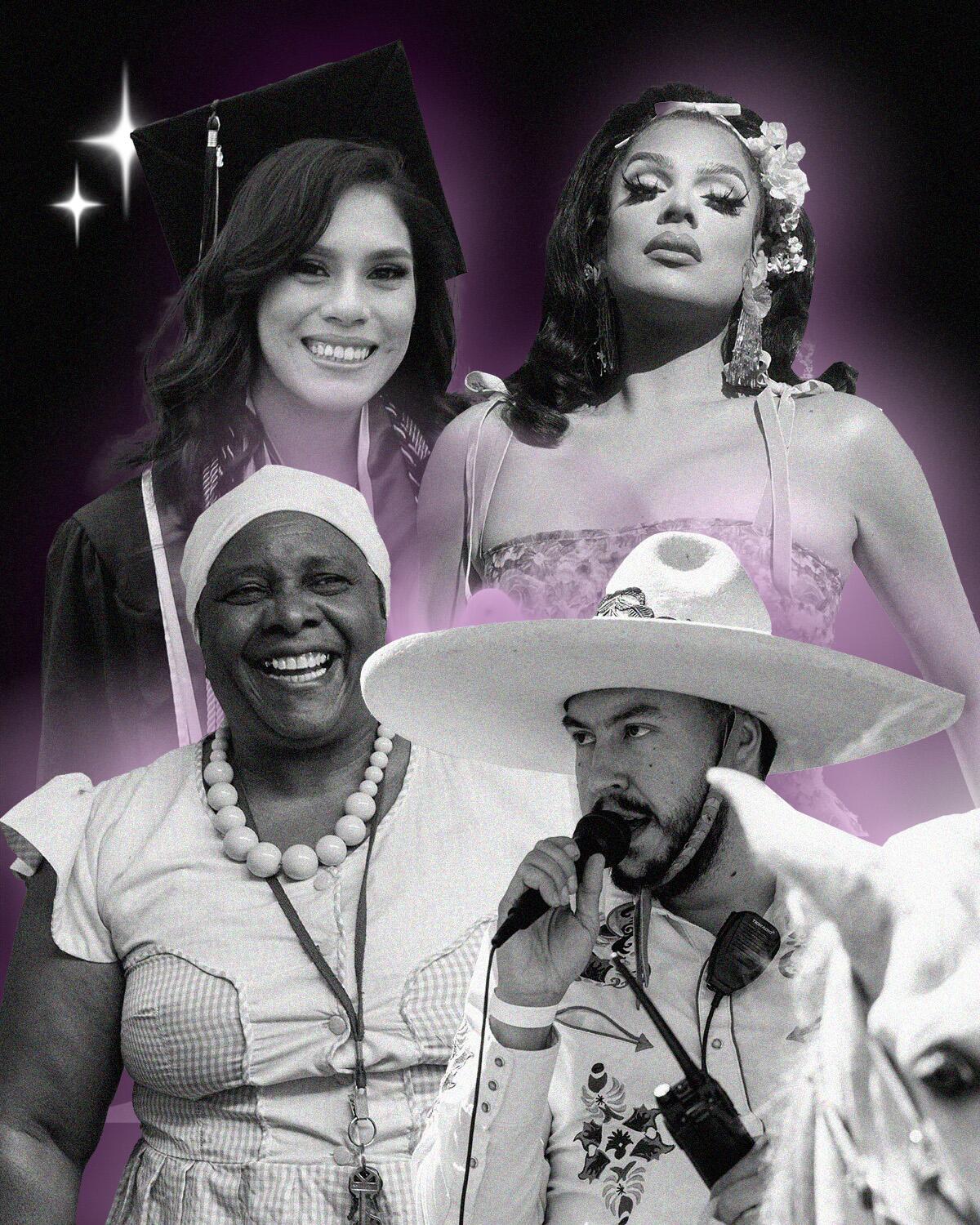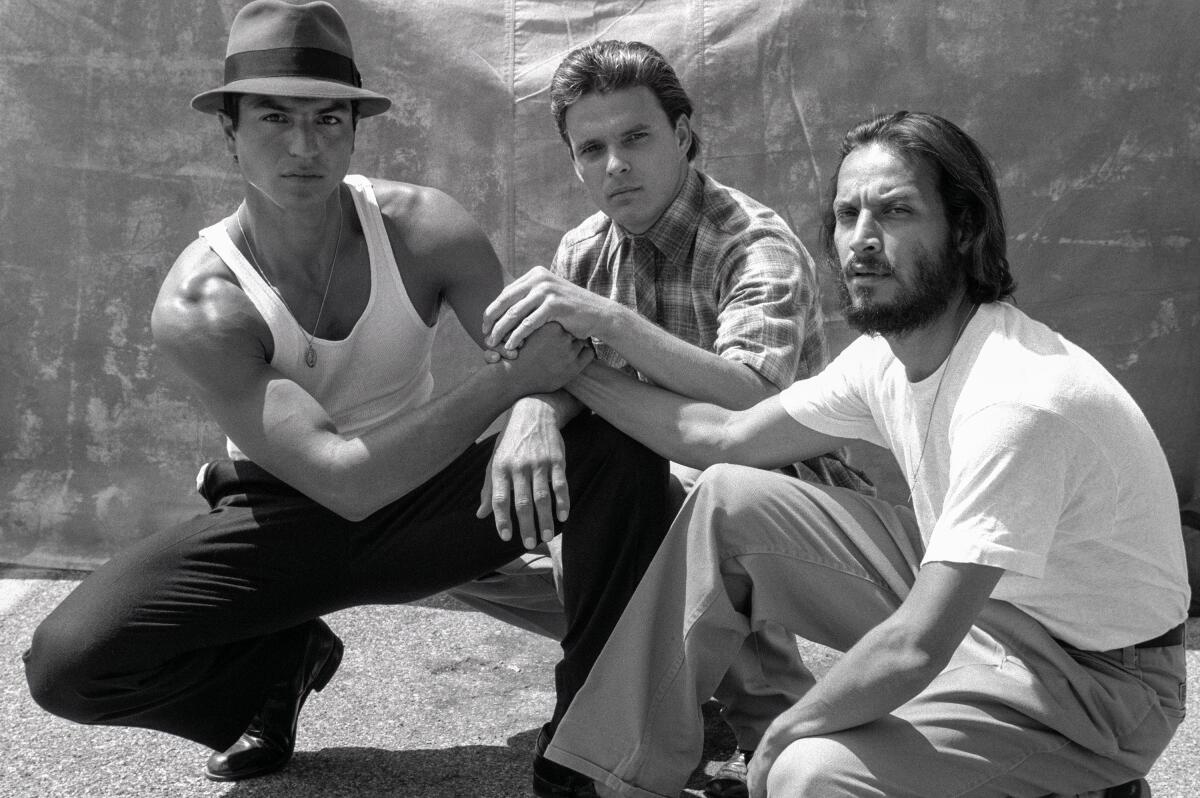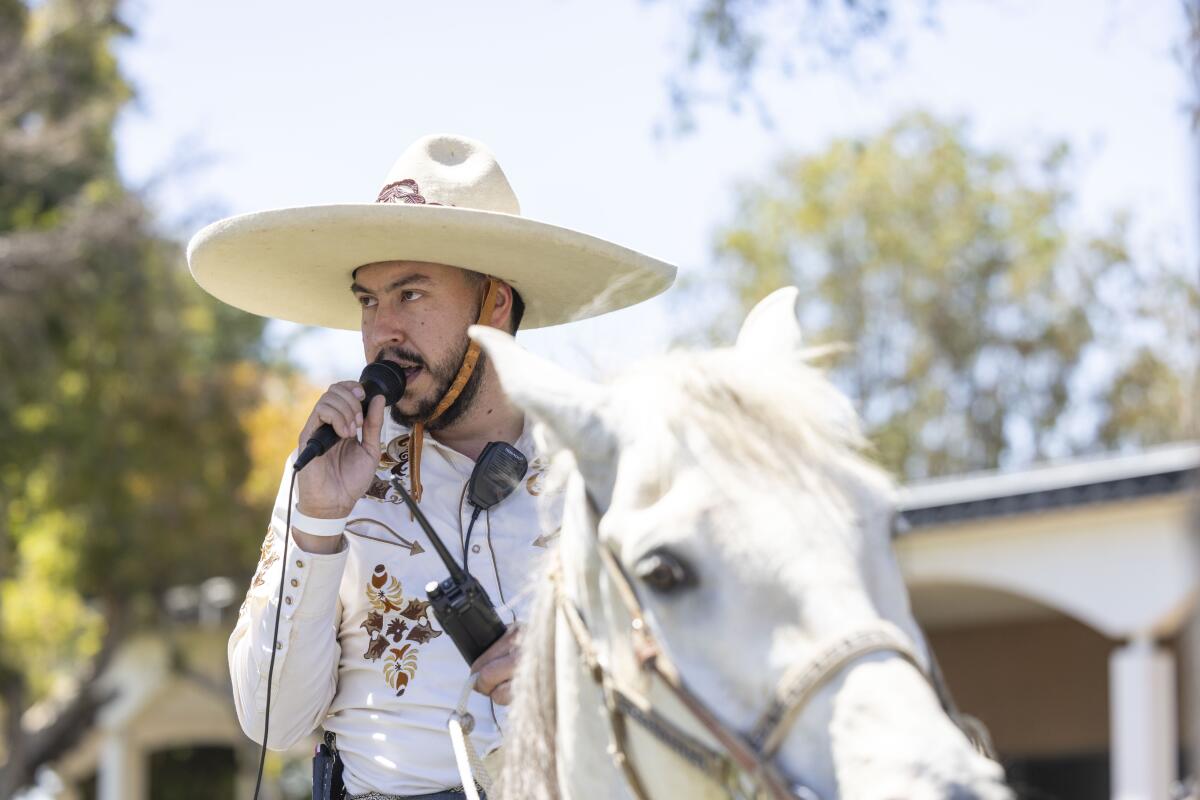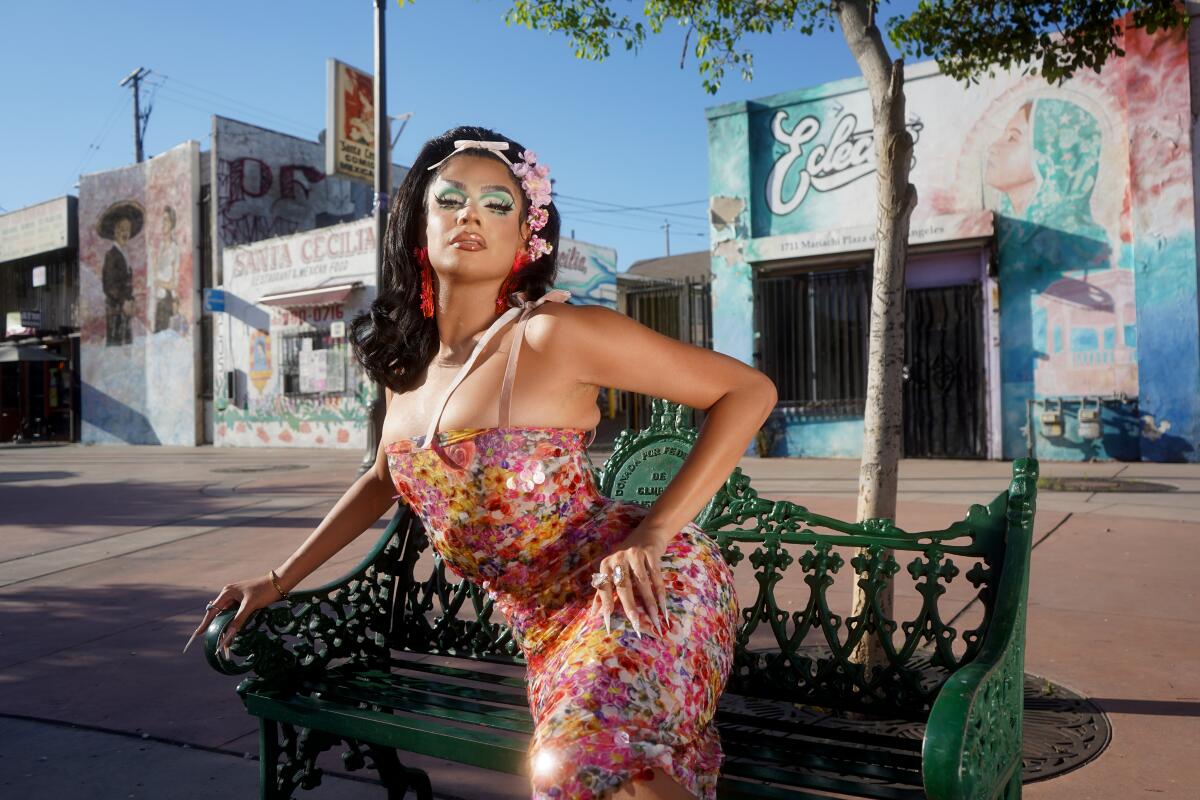9 of the best De Los stories of 2023

- Share via
The end of the year is always a time for reflection. It’s an opportunity to look back at the 12 months that transpired and take stock of what we’ve accomplished .
With that in mind, and because I’m still in the midst of the Guadalupe-Reyes holiday marathon (We’ll be back with our regularly scheduled programming next week, se los juro!), I’ve compiled a list of some of my favorite stories published in 2023 by De Los, the Times’ vertical focusing on Latinx culture and identity that I help oversee.
Disney neglected it. Critics panned it. ‘Blood In Blood Out’ became an L.A. classic anyway

The crime drama “Blood In Blood Out” turned 30 earlier this year. The film, about three Mexican American cousins from East Los Angeles, wasn’t given a chance by distributor Disney and was largely dismissed by film critics (including here at the Times). Despite it all, the Taylor Hackford-directed film became a cult classic among Latinxs. De Los contributor Carlos Aguilar interviewed Hackford, screenwriter and poet Jimmy Santiago Baca and the film’s lead actors to tell the definitive story on a movie that’s not only very quotable, but has also become a staple of the Chicano film canon.
(A quick note: This story was published in April, months before the launch of De Los, but it was assigned and edited by me, and it was intended to be a preview of the types of stories we were hoping to assign. Many thanks to our entertainment colleagues for giving us the space to run it.)
The Avocado Heights Vaquer@s and the preservation of a lifestyle

One of our launch-day stories was this piece by Alejandra Molina, about a group of equestrian enthusiasts in the San Gabriel Valley mobilized into political action and organization after their rancho way of life is threatened by the prospect of real estate development. Of note in Alejandra’s report is the manner in which the subjects of the story weave their fight with the braceros and the Mexican revolution.
I’d also be remiss if I didn’t include this opening line, which to me embodies the “de aquí y de allá” mindset we’re fond of at De Los:
“Samuel Brown-Vazquez has never visited his mother’s rural hometown in Michoacán, Mexico, given the violence and persecution his family fled in the 1980s. But his slice of the motherland is in the San Gabriel Valley in Avocado Heights.”
Commentary: Do Latinos in the U.S. have a ‘toxic gratitude’ problem?
For my money, JP Brammer is one of the most insightful voices in print media right now — and I’m not just saying that because he writes a weekly column for De Los. Brammer’s gift is his uncanny ability to put into words a feeling or an idea that feels unexplainable. I can’t think of a better example than his column from August where he critically examines Latinxs’ penchant for being hard workers. In it, Brammer makes the convincing case that this mindset of “al trabajo nunca se le dice no”— or as he brilliantly calls it, “Si Dios Quiere Syndrome”— is more detrimental than beneficial.
You’re reading Latinx Files
Fidel Martinez delves into the latest stories that capture the multitudes within the American Latinx community.
You may occasionally receive promotional content from the Los Angeles Times.
What former first-gen students wish they knew about college
One of De Los’ stated goals is to publish stories that don’t just entertain our audience, but also provide helpful information for their lives. With that in mind, we put out a call out on our Instagram account asking any of our readers who were/are the first in their families to go to college what they wish they had known before setting foot on campus. The result was this helpful guide with great advice written by staff writer Andrea Flores.
‘I’ve got to find out who I am:’ How the Garifuna Museum is reclaiming culture and identity

The De Los slogan is “Everything Latinidad.” This mantra is largely aspirational; there are more than 60 million Latinxs living in the United States, each with their own unique definition of Latinidad that’s shaped by geography, age, country of origin, socioeconomic status, race and countless other factors. It’s an impossible mission to try to tell all of these stories, but there’s no reason why we shouldn’t try.
That’s why I love this report by staff writer Chelsea Hylton about the Garifuna Museum of Los Angeles, a cultural conservation project launched in 2011 that aims to preserve and uplift the Garifuna culture. It’s a story about resilience, one that also shows just how rich the tapestry of Latinidad really is.
Consider subscribing to the Los Angeles Times
Your support helps us deliver the news that matters most. Become a subscriber.
Oppenheimer’s test site wasn’t remote. It was populated by Hispanos and Native Americans
When “Oppenheimer” was theatrically released this July, it spawned 1,001 takes. Largely absent from the discourse and the film — truly a surprise, given its unnecessarily long runtime— were stories about the downwinders who lived within the fallout zone of the Manhattan Project’s Trinity Test.
“We were the first people ever exposed to radiation as the result of an atomic bomb, and most of us were Hispanos and Native Americans,” said Tina Cordova, founder of the Tularosa Basin Downwinders Consortium, an organization fighting in righting this historical wrong.
“In the 1940s, [the U.S. government] depended on us to be uneducated, unsophisticated, and unable to stand up for ourselves. We’re not those people any longer.”
Valentina opens up about her fame, her gender fluidity and her love of L.A.

It’s nearly impossible to pick one story by Suzy Exposito, De Los cultural columnist, for this list. But if forced to choose, I’d have to go with this July profile of Valentina, the multi-hyphenate from southeast L.A. and “RuPaul’s Drag Race” fan favorite who had a banner year in 2023— not only was she designated Grand Celebrity Marshal at this year’s Long Beach Pride Parade, but she also co-hosted “Drag Race: Mexico.”
To borrow Valentina’s catchphrase, everything about this piece, from the photo shoot in Mariachi Plaza to the quotes is “I-CO-NI-CO!”
Commentary: The food and people of Yakima, home of Yahritza y Su Esencia

In early August, popular Mexican regional act Yahritza y Su Esencia angered countless fans south of the border after their comments about Mexican food, which were deemed disparaging, went viral. The band immediately apologized, and in an exclusive interview with Suzy Exposito, shed some context into what exactly happened. In short, their words were misconstrued and people confused their homesickness with disdain for the land from which their parents and culture hail .
A few weeks after the fracas, De Los contributor Albert Perez spent a few days in Washington’s Yakima Valley to understand where the band was coming from, literally and figuratively.
Column: Decluttering your parents’ home and their traumas
Since launching, contributing columnist Alex Zaragoza has been our go-to utility writer. There’s no story, high or low brow, that she won’t tackle. When I texted her to gauge her interest in writing about the tóxicos of “Love Island USA,” her response was “Say less.” Suffice it to say, when deputy design director Martina Ibañez-Baldor came back from a trip home that was partially spent decluttering her parents’ house with a story pitch that looked into why older Latinxs have hoarder tendencies—trauma, it turns out– we immediately went with Alex. It’s a fun and informative read that sheds light on why we are the way we are, while also giving practical advice.
The Latinx experience chronicled
Get the Latinx Files newsletter for stories that capture the multitudes within our communities.
You may occasionally receive promotional content from the Los Angeles Times.




